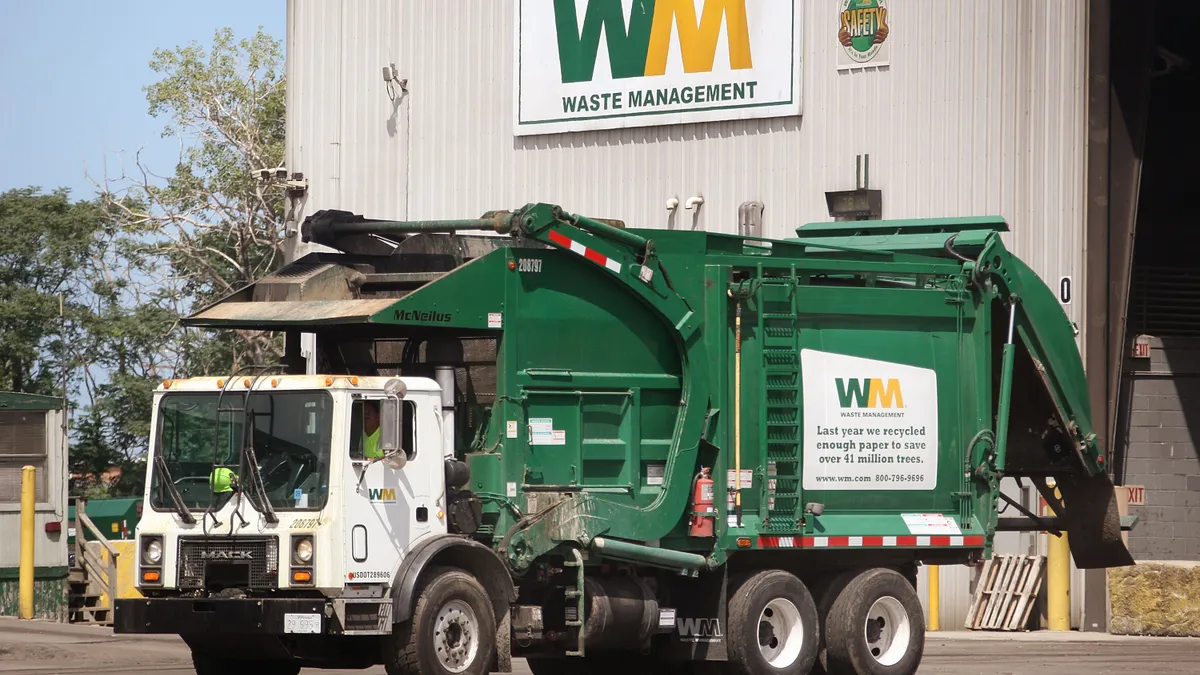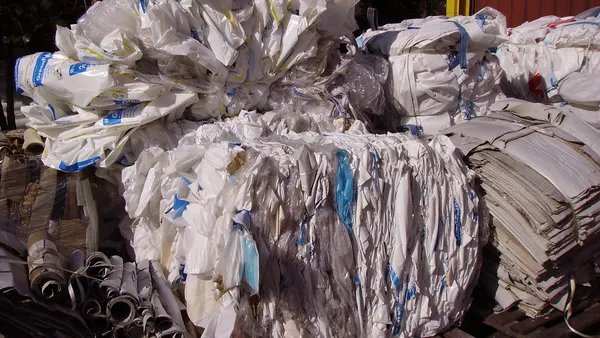The following is a guest piece by Robert Lange, former director of the New York City Department of Sanitation's recycling program. He retired from the agency in 2016 after more than 20 years.
The closure of Rikers Island as a jail provides an opportunity to not only change aspects of New York's waste management infrastructure, but also to potentially rethink expanding the city's role in overseeing it.
While I agree with the majority of the sentiments expressed in a number of recent opinion pieces and legislative proposals regarding the future potential uses of Rikers Island as a center of sustainability and green energy production, following closure of the jail facility, I believe these proposals fall short of accomplishing their expressed goals.
Having worked in bureaucracies for over three decades I know firsthand that merely having good ideas or passing legislation is insufficient grounds for being able to bring those ideas and goals into practical reality. This is especially true in a place like New York, where there are always numerous and powerful special interests groups with opposing viewpoints.
Assuming Rikers Island will in fact be vacated by the Department of Correction in the not too distant future, and the effort is not abandoned by a future mayoral administration and new City Council, accomplishing the various ideas that have been floated thus far will require fundamental changes to portions of the city’s existing operational bureaucracy.
For example, several of the suggested future uses assume that certain waste streams in New York, such as biosolids and municipal solid waste (MSW), can be easily combined at the site. While from a theoretical standpoint this may be true, the reality is not all of those waste streams are controlled by a single entity. In fact, they are controlled by several different city agencies and in some cases, the private sector. City agencies may all ultimately report and answer to the same administration, but they frequently possess very different agendas.
If the Rikers closure opens up discussions about fundamentally overhauling all of New York's collection, processing, recycling and disposal of waste then a citywide waste management authority would be needed to oversee it. The passage of local flow control legislation would also be integral to creating this authority.
New York's current system is bifurcated. The Department of Sanitation (DSNY) handles waste from residential and public buildings. The private sector handles commercial waste, under regulation by the Business Integrity Commission (formerly the Trade Waste Commission) that was created to oversee potential corruption. The responsibility for biosolids falls under the city's Department of Environmental Protection (DEP). Having these many agencies play a role in determining the fate of waste results in isolated solutions that, rather than complementing each other, frequently compete or even conflict.
What New York has avoided for centuries is taking complete control over its entire waste removal, processing and disposal system. Meanwhile, the city has now reached a point where options for what to do with its waste have significantly narrowed. This issue will only further increase and become more costly over time.
While New York does have control over the flow (and to a degree the disposal of) its bio-solids through DEP, it is not in full control over the flow and disposal of the city's solid waste. Though current proposals for franchising private waste and recycling collections may provide some control over that process, they leave final disposition of the materials in the hands of the private sector.
During the Bloomberg administration a "long-term" Solid Waste Management Plan for waste handled by DSNY was put into place. This called for the reactivation of the marine transfer station (MTS) system, for accepting MSW at strategic DSNY-operated waterfront locations and transferring ownership of that waste via barges to privately owned disposal locations outside the city. While this was an admirable plan for addressing the immediate crisis caused by the precipitous political closure of the Fresh Kills Landfill without a coherent long-term plan under the Giuliani administration, it continued to embrace landfilling as the primary option for solid waste disposal.
The multi-decade long-term acceptance and disposal contracts that were put in place as part of this effort are front loaded with capital cost paybacks in their per ton tip fees to the vendors for initial investments that will all but be exhausted within the next decade. This is close to when Rikers may be vacated, at which time an opportunity will present itself for dramatically changing the current operating system for disposal of DSNY trash and embracing potential alternatives.
Key to the city taking control of its waste management system is the institution of flow control legislation. Already tested and survived through numerous legal challenges, flow controls are legal provisions that allow state and local governments to designate the places where MSW is taken for processing, treatment, or disposal. Because of flow controls, designated facilities may hold monopolies on local MSW and/or recoverable materials. Instituting flow controls would allow New York to invest in the infrastructure needed to responsibly handle its various waste streams and potential recyclables, both generated publicly and privately.
While the private sector would no doubt protest such a change, its concerns could be addressed if real operating costs and required profit margins were taken into consideration along with the implementation and regulation of the flow controls. The current effort at commercial waste franchising and source-separated food waste collection mandates set forth requirements without any real considerations of costs to the generator or the collector in instituting those mandates.
Given the limited availability of open space at a reasonable cost in New York, and the fact that Rikers is sufficiently isolated from potentially objectionable neighbors, the island is an ideal location for a major waste processing center. The island is already owned by the city and therefore does not need to be acquired. Given its history as a former dump, its future potential uses are severely limited.
As an island, it provides a central location for the receipt of barged material from the MTS network, thereby maintaining the city’s commitment to a waterborne transfer network rather than relying heavily on truck transport. This is the same type of network that currently feeds recyclables to the local Sims Municipal Recycling MRF and Pratt Industries paper mill. To eliminate some of the potential concerns of the adjacent neighborhoods and the airport, the entire operation from barge unloading to the export of any final products or residual waste can be accomplished in a fully enclosed facility.
Combining the city’s waste resources at a central location like Rikers Island would allow for the use of existing tested technologies for combining trash and biosolids via in-vessel composting and/or using portions of the city’s trash stream along with biosolids in a wet or dry anaerobic digestion process. In addition, the site could also be used as an incubator for testing out new means of capturing valuable resources from the trash as processing and sorting technologies advance, potentially freeing the public in the future from having to sort smaller and smaller fractions of the waste stream out for separate collection. This practice has had mixed results from the standpoint of the public’s general willingness to participate adequately and therefore produce volumes which are sufficient to justify cost effective collection and processing.
Reimagining and overhauling New York's entire waste management system to take advantage of this potential opportunity will require many years of planning and preparation. The time to begin that process is now.
Contributed pieces do not reflect an editorial position by Waste Dive.
Do you have an opinion on this issue, or other topics we cover? Submit an op-ed.


















